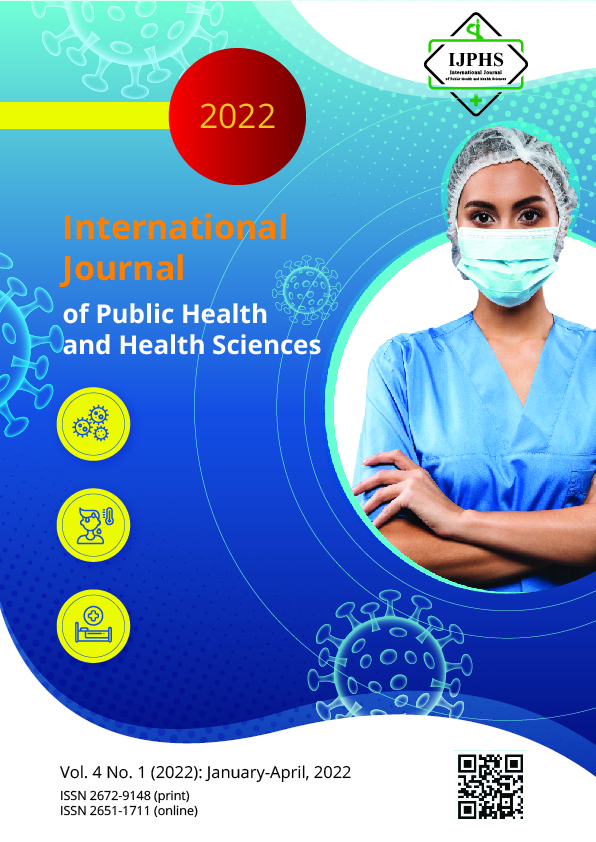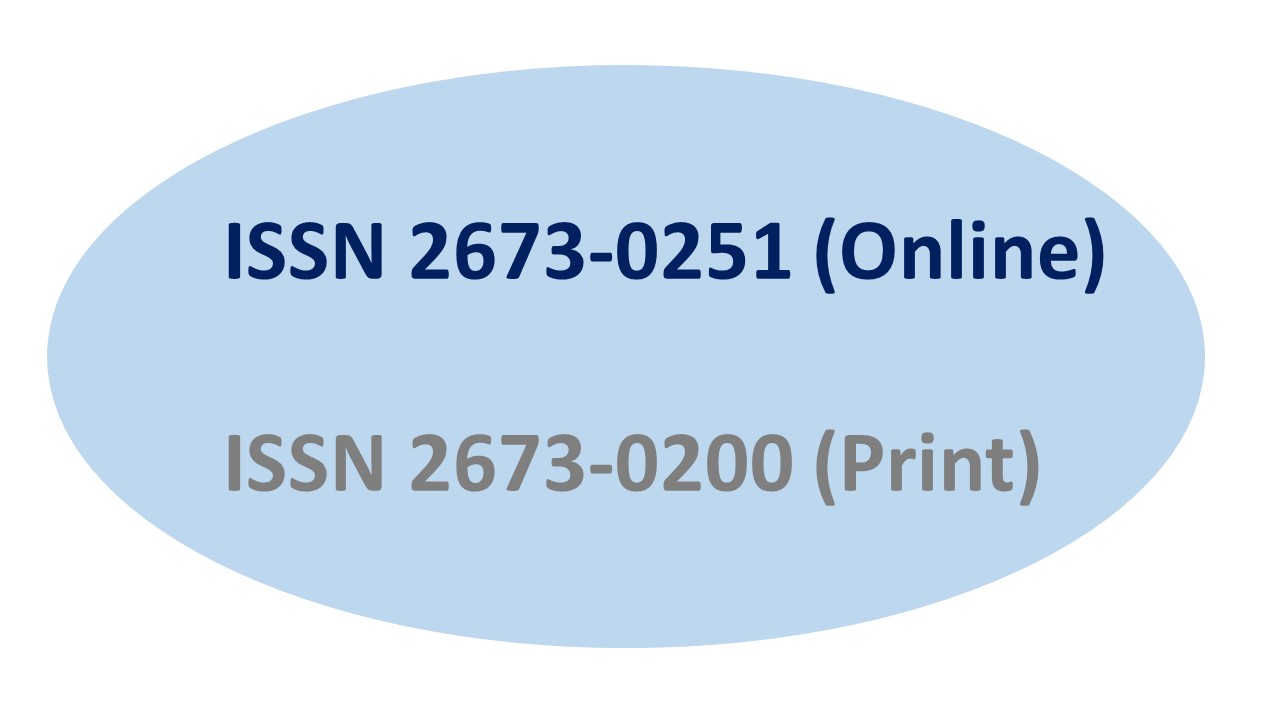Method Development and Method Validation for Residual Water Determination of Erythropoietin Pharmaceutical Formulations by Volumetric Karl Fischer Titration
Keywords:
Erythropoietin, Lyophilized powder, Method validation, Residual water determination, Volumetric Karl Fischer titrationAbstract
The aim of this study is to develop and validate a water determination method for erythropoietin products using volumetric Karl Fischer (KF) titration technique. The external extraction technique using Hydranal™ formamide dry as an extraction solvent and using a mixture solution of Hydranal™ methanol dry and Hydranal™ formamide dry in a ratio of 60:40 as a solvent in the titration vessel was designed as a suitable method. The developed method was validated for specificity, repeatability, accuracy, and intermediate precision. The method was specific to the residual water contained in the erythropoietin pharmaceutical products as there was no effects from any interferences. Repeatability expressed the relative standard deviation (RSD) of six replicate samples as 4.6% (≤10%), which clearly revealed that the method was precise. The %recoveries obtained from three concentration points (lowest %residual water content, 100% and 120% of specification) were 101%, 104% and 105%, which were within the acceptable range of 90-110%. It obviously indicated that the method provided a very acceptable accuracy. The intermediate precision outcomes on different days and between analysts were shown in terms of %margin. %Margin was observed as an excellent value of 6% (≤25%). This indicated that the method was reproducible. In conclusion, it was indicated that the developed method was suitable for water determination in erythropoietin products since the validation results show that the method was specific, precise, accurate, and reproducible.
References
Appendix IX C. Determination of Water. (2019). In British Pharmacopoeia Commission (Ed.), British Pharmacopoeia (2019 ed.). Stationery Office.
Bohlius, J., Weingart, O., Trelle, S., & Engert, A. (2006). Cancer-related anemia and recombinant human erythropoietin--an updated overview. Nature clinical practice. Oncology, 3(3), 152–164. https://doi.org/10.1038/ncponc0451
Bouchard, A., Hofland, G. W., & Witkamp, G.-J. (2007). Properties of Sugar, Polyol, and Polysaccharide Water−Ethanol Solutions. Journal of Chemical & Engineering Data, 52(5), 1838–1842. https://doi.org/10.1021/je700190m
Chang, L. L., Shepherd, D., Sun, J., Tang, X. C., & Pikal, M. J. (2005). Effect of sorbitol and residual moisture on the stability of lyophilized antibodies: Implications for the mechanism of protein stabilization in the solid state. Journal of pharmaceutical sciences, 94(7), 1445–1455. https://doi.org/10.1002/jps.20363
Chitsopa, K. (2019). SOP no. 2202138 General Procedure for Water Determination by Karl Fischer Titration (6th ed.). Nonthaburi: Bureau of Drug and Narcotic, Department of Medical Sciences.
Erythropoietin for Injection. (2019). In British Pharmacopoeia Commission (Ed.), British Pharmacopoeia (2019 ed.). Stationery Office.
General chapter <921> Water determination. (2019). In United States Pharmacopeial Convention Committee of Revision (Ed.), USP-NF online (42nd ed.). United States Pharmacopeial Convention.
Grampp, G., McElroy, P. L., Camblin, G., & Pollock, A. (2018). Structure-Function Relationships for Recombinant Erythropoietins: A Case Study From a Proposed Manufacturing Change With Implications for Erythropoietin Biosimilar Study Designs. Journal of Pharmaceutical Sciences, 107(6), 1512–1520. https://doi.org/10.1016/j.xphs.2018.01.018
Henry, D. H., Beall, G. N., Benson, C. A., Carey, J., Cone, L. A., Eron, L. J., et al.. (1992). Recombinant human erythropoietin in the treatment of anemia associated with human immunodeficiency virus (HIV) infection and zidovudine therapy. Overview of four clinical trials. Annals of internal medicine, 117(9), 739–748.
https://doi.org/10.7326/0003-4819-117-9-739
Houen, G. (1996). The solubility of proteins in organic solvents. In Acta Chemica Scandinavica, 50(1), 68–70. DOI:10.3891/acta.chem.scand.50-0068
Ifeanyl, O. E. (2015). A Review on Erythropoietin. International Journal of Advanced Research in Biological Sciences, 2(4), 35–47.
Incledon, C. and Lam, H. (2004). Development and validation of automated methods. In C.C. Chan (Eds.), Analytical Method Validation and Instrument Performance Verification (pp. 67-83). John Wiley & Sons Inc.
John, M. J., Jaison, V., Jain, K., Kakkar, N. & Jacob, J. (2012). Erythropoietin use and abuse. Indian Journal of Endocrinology and Metabolism, 16(2), 220-227.
https://doi.org/10.4103/2230-8210.93739
Joseph, E. (2019). Residual Moisture Determination in Lyophilized Drug Products. Pharmaceutical Technology, 43(11), 30–39.
Kato, T. (2016). “Subchapter 35A - Erythropoietin. In Takei, Y., Ando, H., & Tsutsui, K.” Handbook of Hormones. (pp. 316–318). Academic Press: Elsevier. https://doi.org/10.1016/C2013-0-15395-0
Little, T. A. (2016). Establishing Acceptance Criteria for Analytical Methods. BioPharm International, 29(10), 44–48.
Margreth, M., Schlink, R., & Steinbach, A. (2010). Water Determination By Karl Fischer Titration. Pharmaceutical Sciences Encyclopedia. https://doi.org/10.1002/9780470571224.pse415
Mettler Toledo. (2011). Good Titration Practice™ in Karl Fischer Titration [Brochure]. Mettler-Toledo AG.
Organization for Economic Co-operation and development (OECD). (2014). OECD Guidance Document for Single Laboratory Validation of Quantitative Analytical Method-Guidance used in support of pre-and post-registration data requirements for plant protection and biocidal products. ENV/JM/MONO, 20(204), 1–18. http://www.oecd.org/officialdocuments/publicdisplaydocumentpdf/?cote=ENV/JM/MONO(2014)20&doclanguage=en
Thai Food and Drug Administration, Bureau of Drug Control. Searching and Statistic Information; Erythropoietin. http://www.fda.moph.go.th/sites/Drug/(accessed October 22, 2019).
Varas, N., Camacho, F., & Sánchez, O. (2018). Recombinant Human Erythropoietin. The problem of glycosylation. Revista Bionatura, 3(3), 683–688. https://doi.org/10.21931/RB/2018.03.03.10
Veiga, M., Bohrer, D., Noremberg, S., Mattiazzi, P., Do Nascimento, P. C., & De Carvalho, L. M. (2013). Aluminum in Erythropoietin Formulations: Lyophilized versus Liquid Forms. Renal Failure, 35(3), 391–395. https://doi.org/10.3109/0886022X.2012.761039
Yoshikawa, H., Hirano, A., Arakawa, T., & Shiraki, K. (2012). Effects of alcohol on the solubility and structure of native and disulfide-modified bovine serum albumin. International Journal of Biological Macromolecules, 50(5), 1286–1291. https://doi.org/10.1016/j.ijbiomac.2012.03.014.
Downloads
Published
Issue
Section
License
Copyright (c) 2022 International Journal of Public Health and Health Sciences

This work is licensed under a Creative Commons Attribution-NonCommercial-NoDerivatives 4.0 International License.
If the manuscript is accepted for publication, copyright of the article shall be assigned to the IJPHS. After acceptance of a manuscript, the authors will be requested to complete a copyright transfer agreement form







